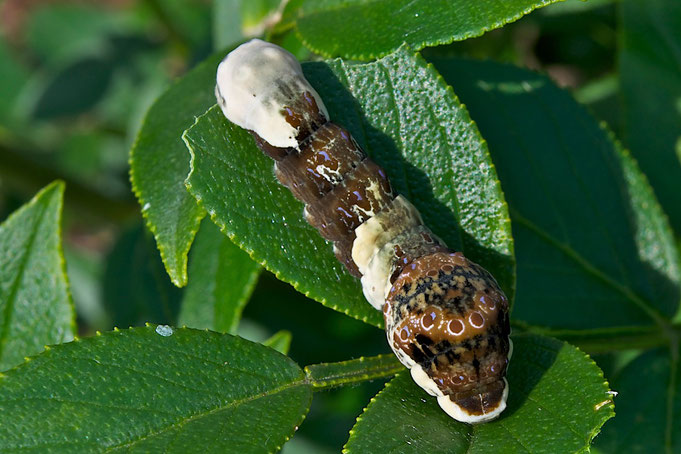A Southern Species Moving North
The Giant Swallowtail (Papilio cresphontes) is the largest butterfly in Canada and the United States. Adults have a forewing span of 4 to almost 6 inches (avg. 5.5 inches) for males and a span of 5 to 7 inches (avg. 5.8 inches) for females. It is an uncommon stray in southern New Hampshire and Vermont, but we have had them here at Distant Hill Gardens for the past two years.

Is their presence in New England an example of climate change at work?
A paper published last year in Nature Climate Change seems to support that theory. They reported that many of the southern butterfly species in the US are packing up and moving north... "Our results suggest that a major, climate-induced shift of North American butterflies, characterized by northward expansions of warm-adapted and retreat of cold-adapted species, is underway."

The caterpillar of the Giant Swallowtail is as least as interesting as the butterfly. It looks exactly like a bird dropping, making it unappetizing to most insect-eaters. If it does happen to be threatened by a predator, a bright red, forked structure called an osmeterium emerges from its head, along with releasing a strong noxious odor.

The caterpillar has the nickname 'Orange Dog' due to preference for plants in the citrus family. It is very common in Florida and is considered a pest in the citrus groves throughout the State.
Here in northern New England, it will feed on the native Common Prickly Ash (Zanthoxylum americanum) which is in the citrus family.
The only plant growing at Distant Hill Gardens that we have found Giant Swallowtail caterpillars feeding on is a Gas Plant (Dictamnus albus). It turns out that Dictamnus albus is in the same botanical family as citrus, Rutaceae.
There is one other plant in the Rue family growing at Distant Hill Gardens, an Amur Corktree (Phellodendron amurense). We will have to keep an eye out for the Giant Swallowtail caterpillar feeding on its leaves.


